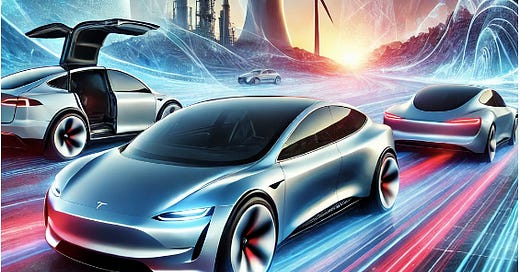Collision of Titans: Geopolitics, Technology, and the Battle for the Future
This unveils a deeper dynamic: geopolitics and technology are not separate forces—they are intertwined like an electric field and a magnetic field.
In the last post, we explored the Kondratiev waves—a powerful blueprint for understanding the technological revolutions that have reshaped industries and societies throughout history. Today, we pivot to its geopolitical counterpart: commodity cycles. While Kondratiev waves serve as a proxy for technological innovation, commodity cycles reflect the geopolitical tensions that drive these innovations. Together, they form a complex interplay, shaping the trajectory of human progress.
The graph before us reveals the cyclical nature of commodity prices throughout history, marked by peaks during times of geopolitical conflict and economic crises. Look no further than the Napoleonic Wars, the U.S. Civil War, and the Cold War—each conflict driving commodity prices to significant highs. These are not mere coincidences; these peaks are the direct outcomes of geopolitical turmoil, which in turn catalyze technological advancement.
This unveils a deeper dynamic: geopolitics and technology are not separate forces—they are intertwined like an electric field and a magnetic field. Geopolitics, akin to an electric current, generates the conditions for technological breakthroughs, while technology, much like a magnetic field, responds and reshapes the geopolitical landscape. The two forces feed off each other. Just as a circulating current creates a magnetic field, geopolitical tensions ignite technological innovations—and the reverse is equally true.
Take the Cold War: the arms race and competition between superpowers spurred breakthroughs in computing, space exploration, and military technology. In return, those advancements shifted the balance of global power. Today, AI and digital technologies are the new battlefield, with the potential to rewrite the global order.
This interaction between commodities and technological revolutions—mapped by Kondratiev waves—doesn’t just influence markets. It shapes the future of civilization. The commodity cycles you see in the graph are the result of these powerful forces. Wars over resources and innovations that redefine economies—they are two sides of the same coin.
As in the Kondratiev framework, these commodity cycles are chaotic but predictable. The boom-bust patterns highlight the moments when geopolitical tension peaks, triggering shifts in commodity prices, investment in new technologies, and ultimately changes in market behavior. The projected peak around 2045-2050 signals a major inflection point, driven once again by this geopolitical-technological dynamic.
Both the Kondratiev Waves and the commodity cycles point to a familiar pattern, one reminiscent of the roaring 1920s—a period of technological revolution in automotive manufacturing, electricity, and the transition from coal to oil. Since the pandemic, we are witnessing a similar revolution: AI is transforming industries, electric vehicles are redefining transportation, and the shift from oil to electricity (powered by gas and uranium) is well underway.
We are in the buildup of the next wave. The speculative frenzy around AI, the post-pandemic geopolitical realignments, and the intensifying competition for data, energy, and resource control are clear signals of what’s to come. History tells us these cycles are inevitable, but it also presents a choice: will we anticipate the transformation, or simply react to its shockwaves?
Thanks for reading,
Guillermo Valencia A
Cofounder of Macrowise
September 30th , 2024




